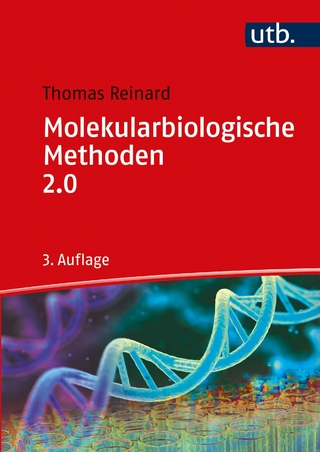
Cereal Diseases: Nanobiotechnological Approaches for Diagnosis and Management
Springer Verlag, Singapore
978-981-19-3119-2 (ISBN)
New ways to improve cereal crops against fungal, bacterial, and viral diseases are covered in this book that was put together by a group of experts. These include genetics, genome editing systems, and nano-biotechnological tools. Cereal crops are mainly the world's leading food crops and feed a large share of the world population. However, external factors, such as pathogens, have often threatened their productivity. Like wheat, rice, maize, oats, barley, millet and storage, etiology, epidemiology, and diseases in cereal crop management. In addition, the importance of crop genetics and genomics in combating pathogens has been discussed. This book offers up-to-date information on new methods, such as the potential of the genome editing system for crop improvement, in particular the CRISPR-Cas system. The current volume also talks about identification, plant breeding, genome editing, and nanotechnology tools that can be used to fight disease in cereal crops. This book is good forstudents, teachers, and researchers who study biotic stress in cereals, as well as scientists who study nanotechnology, disease resistance, pathogen biology, genome editing, agriculture sciences, and future biotechnology.
Kamel A. Abd-Elsalam, Ph.D. is currently the Research Professor at the Plant Pathology Research Institute, Agricultural Research Center, Giza, Egypt. Dr. Kamel’s research interests include developing, improving, and deploying plant biosecurity diagnostic tools, understanding and exploiting fungal pathogen genomes, and developing eco-friendly hybrid nanomaterials for controlling toxicogenic fungi, plant diseases and Agroecosystems applications. Over 160 scientific papers have been published in international peer-reviewed journals such as PLoS Genetics, PloS One, Carbohydrate Polymers, Fungal Diversity, Fungal Biology, and International Journal of Biological Macromolecules, among others. In addition, 17 books on nano-biotechnology applications in agriculture and plant protection were published by the world's major publishing houses (Springer, Tylor Frances, and Elsevier). Since 2019, he has served as the Editor-in-Chief of the Elsevier book series (Applications of Nanobiotechnology in Plant Protection). he has participated as an active member of the Elsevier Advisory Panel, giving feedback and suggestions for improvement of Elsevier’s products and services since 2020. Heba I. Mohamed is a Professor of Plant Physiology, Faculty of Education, Biological and Geological Sciences Department, Ain Shams University. Dr. Heba completed her M.Sc and Ph.D in Plant Physiology, Faculty of Education, Ain Shams University. Dr. Heba’s research interests include biotic and abiotic stresses, plant biochemistry, use of eco-friendly compounds to alleviate plant stress, plant secondary metabolites, and genetic differences between different genotypes. She has editing 4 books in springer nature published and Elsevier. She has published 22 book chapters, 4 review article, and more than75 research articles in international peer-reviewed journals. Dr. Heba is a reviewer international peer-reviewed journals. She also is editor of the Microbial Biosystems journal. Dr. Heba has obtained certificate of recognition in honor of achievement in international publication that supports Ain Shams University World
Chapter 1. An introduction to rice diseases.- Chapter 2. Bacterial diseases of rice.- Chapter 3. Viral diseases of rice.- Chapter 4. Etiology, epidemiology, and management of maize diseases.- Chapter 5. Viral diseases of maize.- Chapter 6. Barley diseases: Introduction etiology, epidemiology, and their management.- Chapter 7. Identification of new susceptibility gene and its role in plant immunity.- Chapter 8. Breeding strategies for developing disease-resistant wheat: present, past, and future.- Chapter 9. Potential breeding strategies for developing disease-resistant barley: progress, challenges, and applications.- Chapter 10. Economic and Eco-friendly alternatives for the efficient and safe management of wheat diseases.- Chapter 11. Resistance gene identification, cloning, and characterization in plants.- Chapter 12. The role of genetic, genomic, and breeding approaches in the fight against fungal diseases in wheat.- Chapter 13. Disease Resistance genes identification, cloning,and characterization in plants.- Chapter 14. Utilization of Biosensors in the Identification of Bacterial Diseases in Maize.- Chapter 15. Nanomaterials for integrated crop disease managemenT.- Chapter 16. Metallic Nanoparticles and Nano-based bioactive formulations as Nano fungicides for Sustainable Disease Management in Cereals.- Chapter 17. Applications of nano-biotechnological Approaches in Diagnosis and Protection of Wheat Diseases.- Chapter 18. Nanomaterials for the Reduction of Mycotoxins in Cereals.
| Erscheinungsdatum | 17.11.2022 |
|---|---|
| Zusatzinfo | 1 Illustrations, black and white; XII, 406 p. 1 illus. |
| Verlagsort | Singapore |
| Sprache | englisch |
| Maße | 155 x 235 mm |
| Themenwelt | Naturwissenschaften ► Biologie ► Genetik / Molekularbiologie |
| Technik ► Umwelttechnik / Biotechnologie | |
| Weitere Fachgebiete ► Land- / Forstwirtschaft / Fischerei | |
| ISBN-10 | 981-19-3119-4 / 9811931194 |
| ISBN-13 | 978-981-19-3119-2 / 9789811931192 |
| Zustand | Neuware |
| Informationen gemäß Produktsicherheitsverordnung (GPSR) | |
| Haben Sie eine Frage zum Produkt? |
aus dem Bereich


